
Readability is proud to announce the launch of a new reading assessment tool that is designed to help parents understand their child’s reading level and literacy proficiency in only a minute. This is the only free reading assessment that is offered online.
The assessment evaluates a child’s reading ability for fluency and comprehension proficiency. After completing the assessment, a report shows the child’s grade level and provides personalized recommendations for practice.
Step 1: A Parent or Teacher clicks on the link to set up an assessment. No login is required.
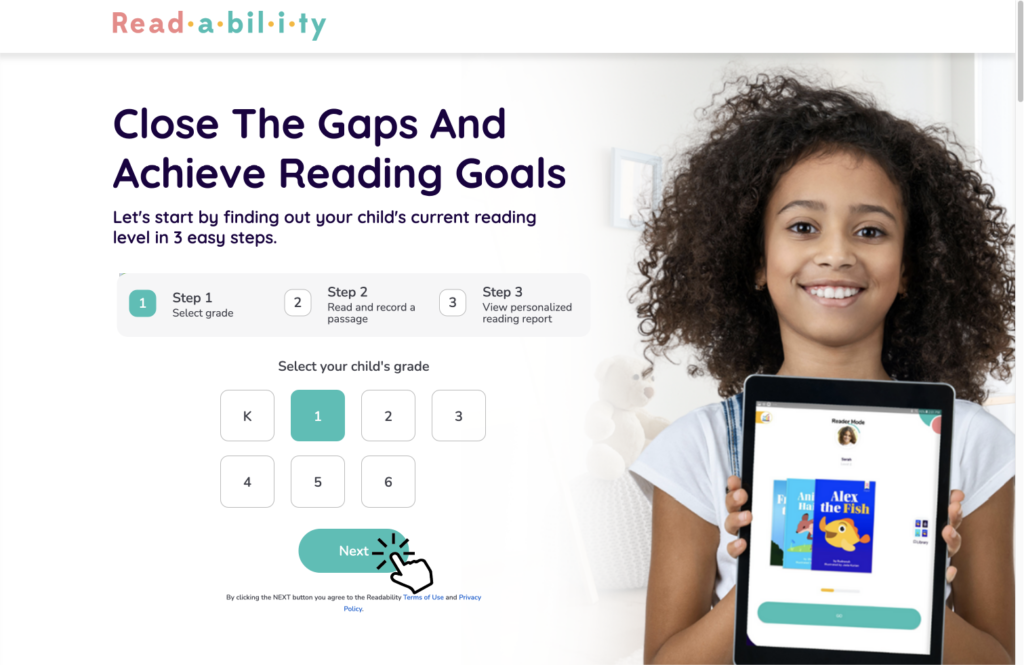
Step 2: Ensure your microphone is on.
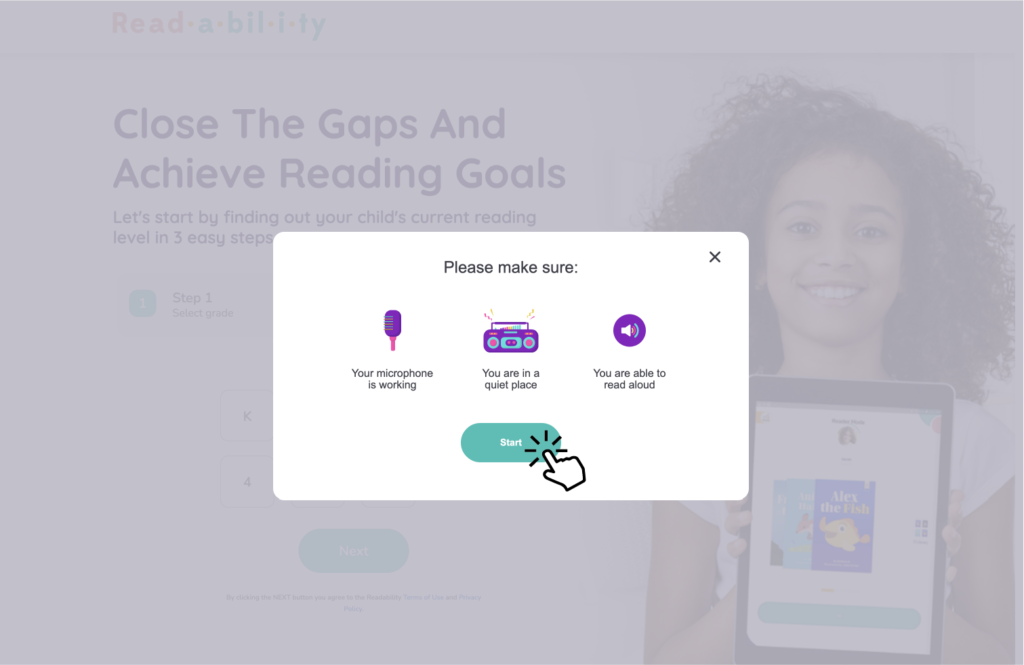
Step 3: Get Ready to Read! Your child completes the assessment in 1 minute.
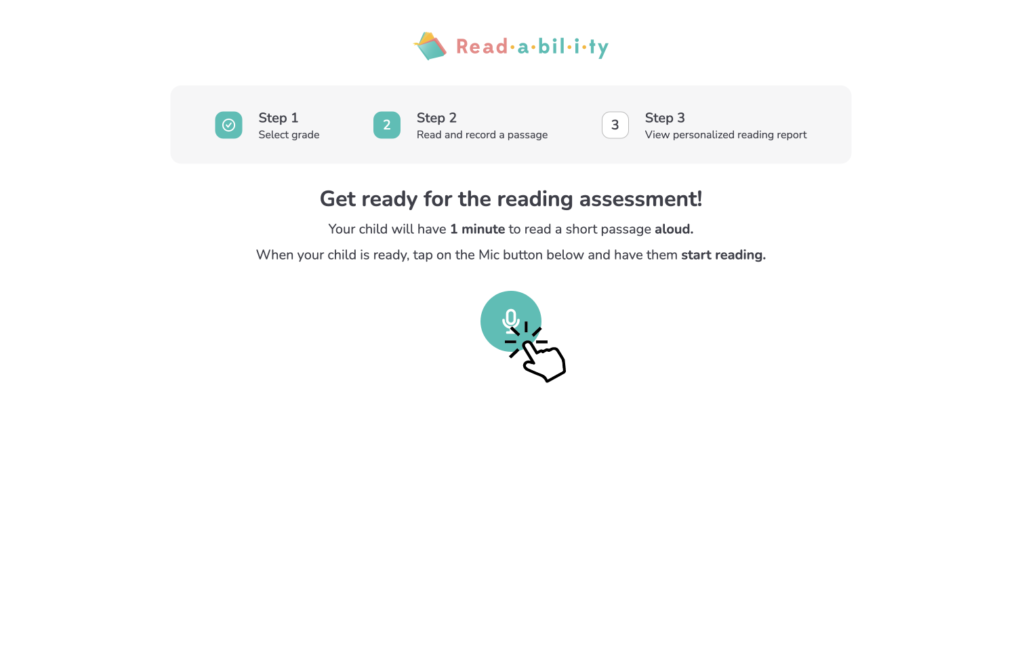
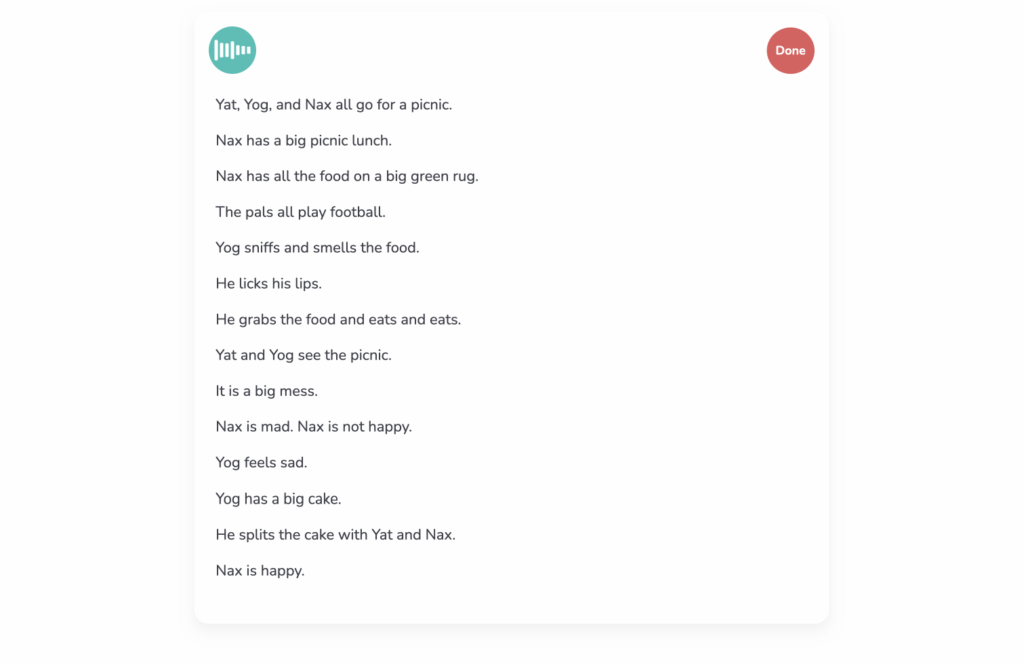
Step 4: A report is generated showing your child’s proficiency.
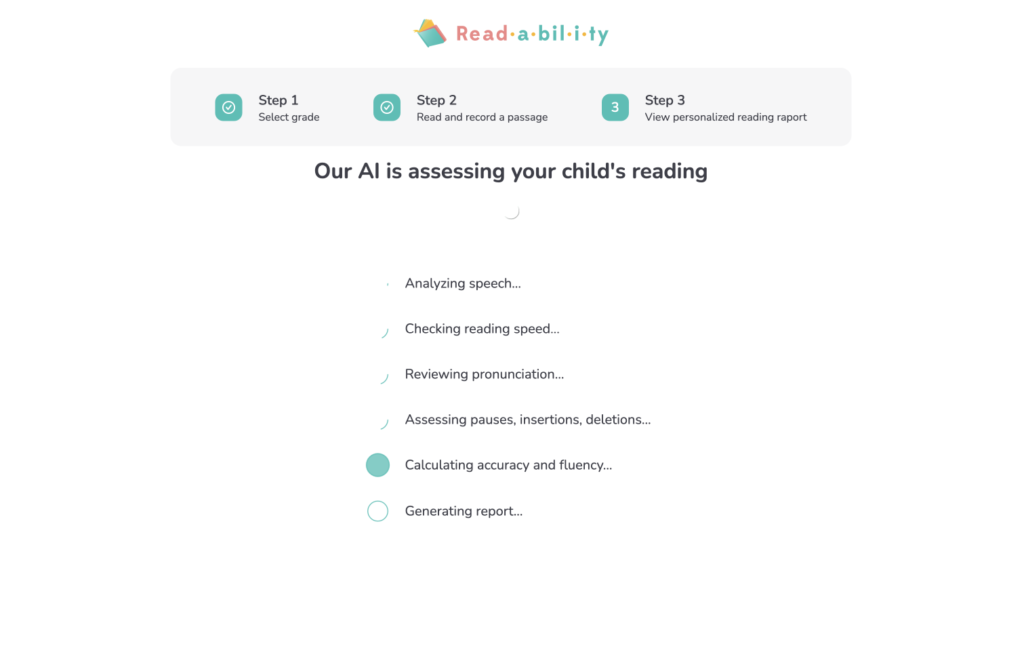
Step 5: A personalized plan is given to your child. Parents can start a free trial of Readability to lift their child’s reading scores.
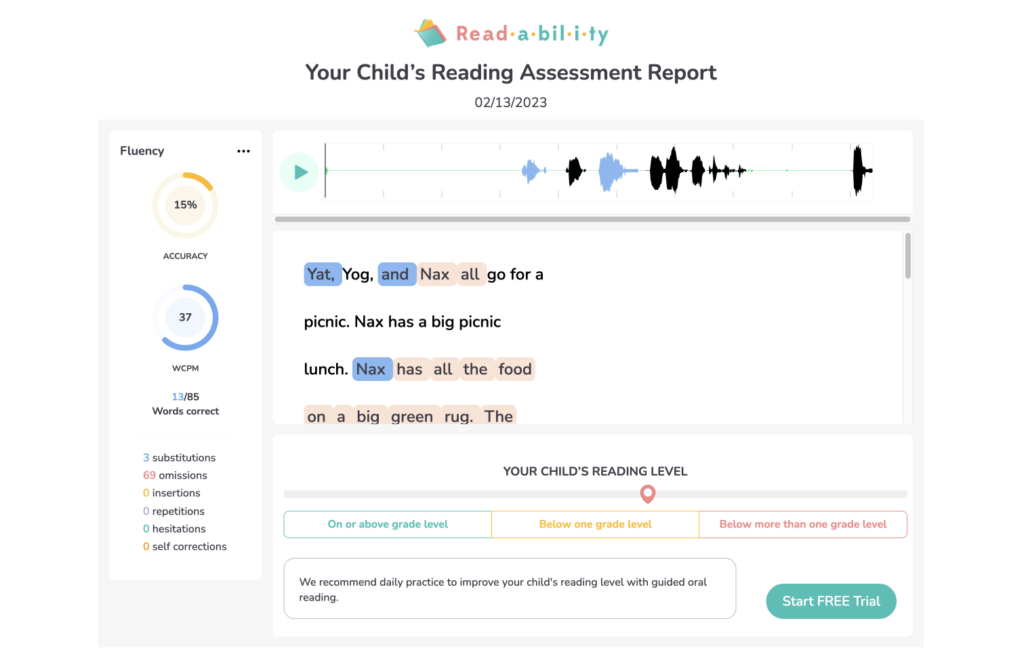
Readability uses the most advanced technology and a research-based approach to help students learn to read independently and advance their reading abilities while parents can track their progress.
How Does the Reading Assessment Work?
Readability’s reading assessment tool is simple for parents to navigate. The assessment can be completed in just three steps.
First, parents need to select their child’s grade level. Once parents select their child’s grade, Readability will prompt the child to read and record a passage. After children record this reading assignment, the program will assess their reading level by measuring the child’s fluency—words read per minute (less errors). The program also measures comprehension.
Readability will generate a reading report that helps parents understand their child’s reading level. This report can help parents determine if their child is reading below grade level. In addition, the report will provide next steps on how parents can help their child.
How Long Does the Assessment Take?
Parents might wonder if their child will have the patience or attention span to complete a reading assessment. Readability designed the online assessment to be simple and quick; children won’t need to sit for a long period of time to answer questions or read long blocks of text.
In fact, Readability’s online reading assessment can be completed in less than two minutes. Parents can discover quickly if their child is reading at the appropriate grade level.
Who Can Use the Assessment Tool?
Readability is designed to be used for children in kindergarten through sixth grade. The reading assessment allows parents to select their child’s grade level to determine the child’s reading ability. Parents can choose from kindergarten through sixth grade.
Why Should Parents Use the Online Assessment?
Parents could suspect that their child is struggling to read at grade-level. Others might already know that their child is behind grade-level literacy benchmarks. In addition, parents also could be unsure about their child’s reading level.
The reading assessment can provide parents with a general understanding of their child’s reading fluency and their comprehension. Again, the assessment is designed to be a quick gauge of a child’s reading ability.
Once the child has recorded the assigned reading passage, the program will measure the child’s reading level and provide a reading report to help parents understand how they can help their child practice to gain proficiency.
Readability’s assessment also can help parents who are trying to determine the best book level for their child. A reading assessment provides parents with an appropriate reading level to help guide lessons at home.
How to Help Struggling Readers
The assessment could reveal that a child is reading below their expected grade level. The report will provide parents with appropriate practice tips to help the child gain fluency and proficiency, but parents might want to know how they can provide additional guidance at home.
Children can struggle with different aspects of reading. For example, some children might have difficulty with phonics and decoding the words. For younger children who struggle with decoding, parents might need to review and teach the letters of the alphabet and the sounds associated with each letter.
Older children who struggle with decoding might require more help (especially if they are reading far below grade level). The reading report also could influence parents to reach out to their child’s teacher or school administration to inquire about taking steps towards initiating evaluations for reading intervention or more specialized instruction.
Children might simply struggle with comprehension (but have no issue with decoding). Depending on the age and grade-level of the child, comprehension expectations could focus on basic details related to the w/h questions (who, what, where, when, why and how). Older children might be expected to make predictions, infer meaning and make comparisons related to literary elements.
Parents can help younger children boost their comprehension skills by using visual aids like comprehension bookmarks that feature prompts or graphic organizers that encourage children to map out details of the book. Parents can find graphic organizer worksheets and free comprehension bookmarks online.
Sticky notes also could be a colorful bookmark for children and provide them with a place to write down important details as they read. Many sticky note pads provide numerous hues of paper and children could color code notes for their book to correlate to a specific literary concept like theme, character, etc. Using color-coded sticky notes help children mark their page and organize their thoughts.
Older children also could use visual tools to help guide comprehension. However, comprehension bookmarks might include lines for writing notes (instead of listing prompts). Sticky notes and graphic organizers also could be helpful.
Use the Reading Assessment to Guide the Reading Journey
Readability’s reading assessment tool can be used by parents who want or need reassurance about their child’s reading abilities. The tool might show that the child is right on target or reading above and beyond grade level.
Parents sometimes compare a child to an older sibling that was a precocious reader, and this comparison could cause parents to assume that a child who is reading at grade level is reading below expectations. Readability’s tool might show that parents should have no concerns, and, again, parents might discover their child is ahead of expectations.
The data from the reading report can be used to help parents guide the child’s reading journey at home. If parents know that their fourth grader is reading at a fifth grade level, they can help their child choose books that are slightly more challenging.

Begin the Readability Program
If Readability’s report shows that the child is reading slightly below grade-level expectations, parents can focus on ways to help their child. One of the easiest resources for helping a child gain reading proficiency and confidence is to introduce them to the Readability program.
Readability lets parents choose their child’s reading level to use as the starting point for the program. However, Readability recommends that parents set the program to begin one reading level below their child’s current reading level—this can help children feel more confident. Readability also can work with the child to determine the best benchmark level to begin lessons.
Each reading level in the program includes a library of books. Children listen to the books and read them aloud. Readability features a built-in AI tutor that is designed with voice-recognition software; as the child reads, the tutor learns their voice and can identify when the child is struggling.
The tutor is always ready to help children; the program is designed to ensure that children always receive the help and guidance they need. The tutor also actively measures the child’s reading fluency to gauge reading progress. In addition, at the end of each book, the tutor asks questions to test the child’s comprehension. Children only advance to a more difficult reading level when they demonstrate mastery of both comprehension and fluency.
Readability also is designed to help children grow their word knowledge. Each book includes a list of vocabulary words, and children can tap any word in a story to hear the definition or listen to the word used in a sentence.
Parents who feel that their child can benefit from Readability’s multimodal approach to reading instruction can sign up for a free trial period to explore the program. The free trial extends for seven days and provides access to all the program’s features (including the AI tutor).
Use Readability’s free reading assessment tool to better understand a child’s reading level and reading proficiency and then explore the Readability program to help struggling readers move forward in their reading journey.

 Español
Español